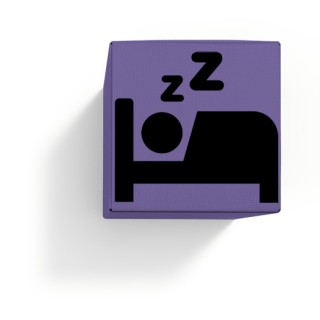News & insights
Date: July 2021 | Sector: Transport | Expertise:
Appraising options for mitigating aviation noise
EU Regulation 598/2014 (“EU598”),[1] requires that a “Balanced Approach” be taken to managing aviation noise, with operating restrictions only being introduced once other measures have been fully considered, as shown in the figure below:

Operating restrictions can range from limits on the use of certain noisier aircraft types to a full ban on flights operating at night. EU598 also requires that the likely cost-effectiveness of any proposed noise mitigation measure is thoroughly evaluated, including for any proposed operating restrictions. The responsibility for evaluating cost-effectiveness lies with the noise competent authority, as designated by individual member states, but the analysis is often delegated to airport operators.
What does it mean to evaluate cost-effectiveness?
One of the early issues that a noise competent authority (or airport operator) will need to decide on, is what appraisal method to use to evaluate cost-effectiveness. In the box below, we present three common methods for economic appraisal, and the key advantages and disadvantages of each approach.
| In Cost-Benefit Analysis (CBA), the costs and benefits of a given intervention are valued in monetary terms, added up, and compared against a baseline. CBA attempts to capture in monetary form the full welfare impact, i.e. both economic and social impacts. However, some are more easily quantified than others, so a CBA often gives a partial view.
Cost-Effectiveness Analysis (CEA) assesses which of different options to achieve the same objective, is most cost-efficient. An advantage of cost-effectiveness analysis is that there is no requirement to monetise the objective (which for the purposes of EU598, is to manage aviation noise). However, it works best when the noise objective is associated with a single noise metric, which often is not the case. Economic impact analysis refers to any assessment that purely looks at the impact on macroeconomic variables such as gross domestic product (GDP) or gross value added (GVA). However, without due care, the economic impacts can easily be overestimated using this approach. |
Whereas EU598 predominantly refers to CEA, it also allows for the use of CBA, with the following included in the preamble of the Regulation:
(10) While a cost-benefit analysis provides an indication of the total economic welfare effects by comparing all costs and benefits, a cost-effectiveness assessment focuses on achieving a given objective in the most cost-effective way, requiring a comparison of only the costs. This Regulation should not prevent Member States from using cost-benefit analyses where appropriate.
EU598 also refers to assessing direct, indirect, and catalytic impacts on the economy, which we infer to mean economic impact or GVA analysis.
On the other hand, economic appraisal in the UK and Ireland is typically conducted using CBA, but the appraisal guidance of both countries gives the flexibility for public authorities to use CEA.[2] Appraisal guidance in the UK explicitly rejects the assessment of macroeconomic effects on GDP or GVA within economic appraisal.
In our previous work for Heathrow Airport evaluation the cost-effectiveness of night-time operating restrictions, we have recommended the use of CEA, while borrowing techniques typically used within CBA (e.g. assessing as many impacts in monetary terms as possible and assessing remaining impacts qualitatively). This had the advantage of meeting requirements within EU598 requirements, while ensuring a robust and complete assessment of the relative merits of different noise management measures.
Assessing the costs and benefits of operating restrictions
Assessing the costs and benefits of operating restrictions can be challenging, particularly as the costs are often costs incurred as lost opportunities rather than directly incurred financial costs. In other words, the cost often relates to a loss of economic activity rather than necessarily higher costs for firms in the aviation sector.
Costs
Operating restrictions may lead to higher costs for airlines (e.g. bringing forward investment in quieter aircraft), or lost revenues (e.g. for flights that can no longer take place). Customers, in the form of passengers and those who send/receive freight, can also incur costs in terms of a longer or less convenient journey, higher prices, or not being able to travel at all. Finally, depending on the strength of the restrictions, these can have knock-on effects on the aviation sector as a whole and the wider economy.
To estimate the impacts in monetary terms we use standard partial equilibrium analysis, commonly used in transport appraisal. We can then present impacts in terms of changes in producer surplus (costs that are incurred by the firms in the aviation sector), changes in consumer surplus (impacts on passengers and freight users), and wider economic impacts.
 |
Freight Analysis Although there are standardised approaches for assessing the value passengers attach to changes in journey time, journey amenity etc., similar values do not readily exist for freight users. As a result, assessing the impact of these restrictions on freight was much more challenging, despite freight being disproportionately affected by night-time restrictions. For this project CEPA designed a simple framework for assessing the impact of the proposed restrictions on freight, using the latest available academic evidence. |
Benefits
The main benefit of night-time operating restrictions is reduced exposure to noise. Assessing the noise impacts is undertaken by specialist noise consultants, advised by CEPA. A common issue when evaluating the cost-effectiveness of noise mitigation measures, is how to present the noise benefits. Noise benefits may refer to a pure reduction in noise exposure, a reduction in the number of households exposed to noise levels over certain thresholds, or respite from noise exposure for certain periods.
As such, we recommend choosing a noise metric that relates specifically to the noise problem that has been identified. For example, if the noise problem relates to the lack of respite from noise for local residents, then the benefits metric should relate to levels of respite. And if there are multiple noise problems, then the cost-effectiveness can and should be compared in several different ways, such as:
- Noise exposure – Annual cost per reduction in the number of household hours or individual hours where noise exposure is above a certain threshold
- Noise exposure – Annual cost per reduction in the number of households or individuals with average noise exposure above a certain threshold
- Respite – Annual cost per X number of households/individuals being given an additional hour of respite
Other environmental impacts, such as the reduction in carbon and air pollutant emissions, can also be monetised as part of a CEA.
Decision-making
A cost-effectiveness assessment involves balancing the noise benefits against the costs. Using different noise metrics gives greater insight into how well each noise mitigation measure deals with a noise problem. However, these are not necessarily the only important considerations. A competent authority or airport operator will also need to consider operational feasibility, ability to meet the strategic objectives (e.g. required capacity levels, improved international connectivity etc.), and community feedback. The preferred option can then chosen by considering the costs, the effectiveness in terms of noise benefits, and all the other relevant considerations.
[1] Regulation (EU) No 598/2014 of the European Parliament and of the Council on the establishment of rules and procedures with regard to the introduction of noise-related operating restrictions at Union airports within a Balanced Approach and repealing Directive 2002/30/EC, Available at https://eur-lex.europa.eu/legal-content/EN/TXT/?uri=CELEX%3A32014R0598
To find out more, please contact our experts listed below.




